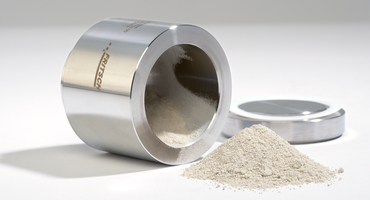Retour à l'aperçu
Sample analysis of maize kernels
Genetically modified maize was developed based on economic reasons
Maize kernels, dressed, prepared as seeds, are subject to testing in regards to possible contents of genetically modified organisms (GMO). Genetically modified maize was developed based on economic reasons:
- in order to gain a higher resistance against parasites like for example the Western Corn Rootworm or the European Corn Borer
- stable and higher crop yields and
- to obtain a quicker maturity
Transgenic maize produces to repel parasites, an agent toxic for these pests.
Now in this context many questions remain unanswered, for example:
- the direct effect on humans
- the impact on animals when used as animal feed and therefore the secondary effects on humans
- implications on soils and therefore the following crops
- the consequences for the entire animal kingdom especially other insects
- the transfer of the modified gene to other crops
Controversial crop
Therefore the cultivation and use of transgenic maize is not without controversy. The necessity arises to test the seeds for possible properties of genetically modified contents. From the to be examined type 1.000 kernels are counted off and this amount is weighed. Now at least three samples with the same weight are drawn. In the example 1.000 kernels weighed 275 g. For the isolation of the DNA 3 g are weighed out.
Considerations prior to comminution
The following theoretic deliberations clarify the necessity to grind the material as fine as possible: On average a kernel weighs 0.275 g. 10 or to be more exact 11 kernels would correspond to a weight of 3 g. This means that without comminution, only each one- hundredth kernel of the above mentioned sample would be analysed. 40 kernels displace 10 ml of water. Consequently an average volume of 0.25 cm3 and a diameter (calculated as a sphere) of approximately 7.8 mm can be determined for a kernel. In order to consider in the weighted sample of 3 g all kernels, at least each kernel has to be broken up in 1.000 pieces. Then in terms of figures, a 2.75 g sample could contain of each maize kernel 10 pieces with a diameter of 0.75 mm. In order to absolutely ensure to have all 1.000 maize kernels represented in the 3 g of weighted sample, an increase of the fineness by the power of ten is desirable. Are 10.000 equal parts generated from each maize kernel, so weighs each piece on the average 0.0275 mg with a diameter of 0.36 mm.
The 3 g of the weighted sample for the analysis would then contain 109.000 pieces or approximately 100 pieces of each kernel. Therefore it is statistically ensured, that during the analysis of the maize kernels for transgenic contents a representative sample is weighed.
Choosing the right Mill for the task
- Considering the following aspects:
- maize kernels as seeds
- avoidance of all types of cross contamination due to comminution
- comminution down to at least 50% smaller 0.5 mm sieving
- prevention of thermal damage effecting the analysis results
consequently, as the best suitable instrument the Variable Speed Rotor Mill PULVERISETTE 14 classic line was chosen.
Of course know-how with the comminution of maize kernels exists. Often, up until now mostly food processors were used due to financial reasons. The obtained results were defined as minimum requirements.
Food processor vs. Laboratory Mill
The inspection was conducted with a sieve cut at 0.5 mm. Utilized was the Vibratory Sieve Shaker ANALYSETTE 3 PRO; maize comminuted with the Variable Speed Rotor Mill PULVERISETTE 14 classic line by means of a 1 mm sieve already yielded a better result in comparison with the food processor: 52% < 0.5 mm was the requirement; 69% < 0.5 mm was achieved. By using the 0.5 mm sieve in the mill, the fineness was clearly additionally improved. The sieve analysis showed that 89% are < 0.5 mm and therefore only 11 % are > 0.5 mm.
This is because of the different shapes of the sieves and also inside the mill due to the high rotational speed the particles are accelerated and then are downright “shot” through the sieve.
Also the maize kernels can still be comminuted when using a 2 mm sieve. Admittedly the sample must be added significantly more slowly and it becomes rather warm.
Meeting all requirements
According to general experience with the comminution via the Variable Speed Rotor Mill PULVERISETTE 14 classic line, the material is 50 % smaller of half of the mesh width of the used sieve. When using the 0.5 mm sieve only of the produced particles are smaller than 0.25 mm. When comparing this value with the in the theoretic contemplations included value, it becomes evident that the comminution with the Variable Speed Rotor Mill PULVERISETTE 14 classic line by using the 0.5 mm sieve meets all required demands and is the optimal solution.
-
Download the FRITSCH-report as PDF file
-
Detailed grinding reports
Retour à l'aperçu








